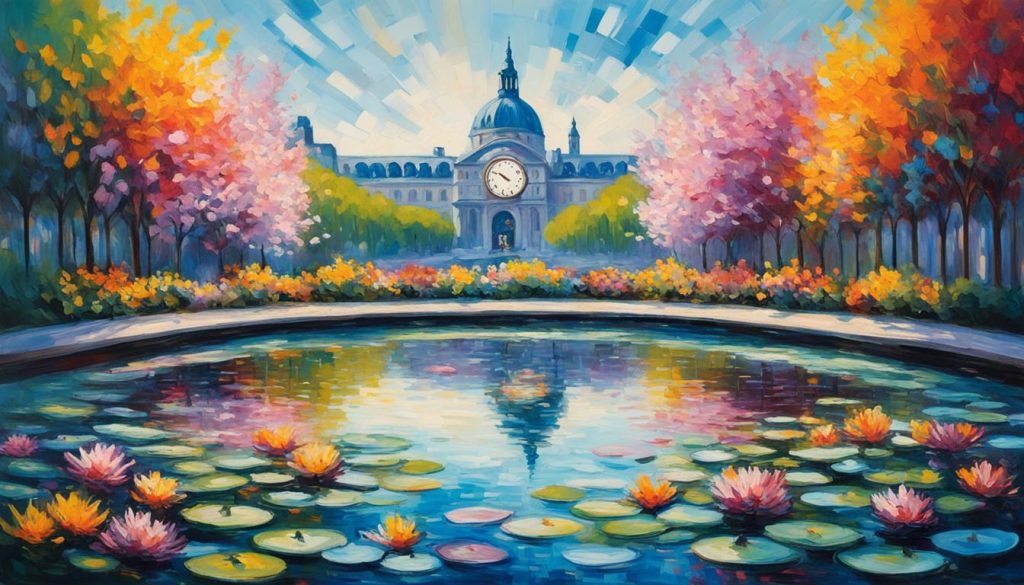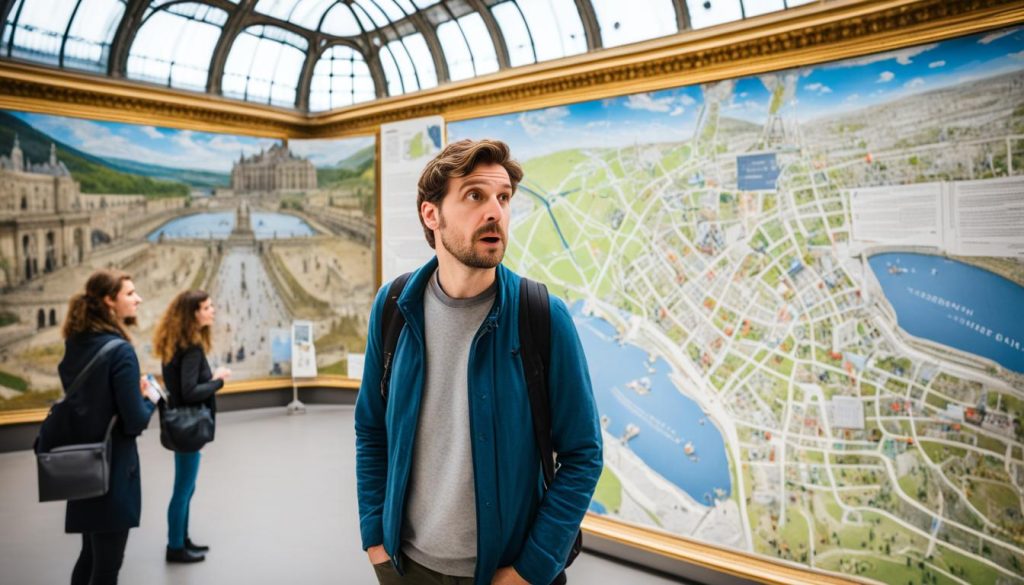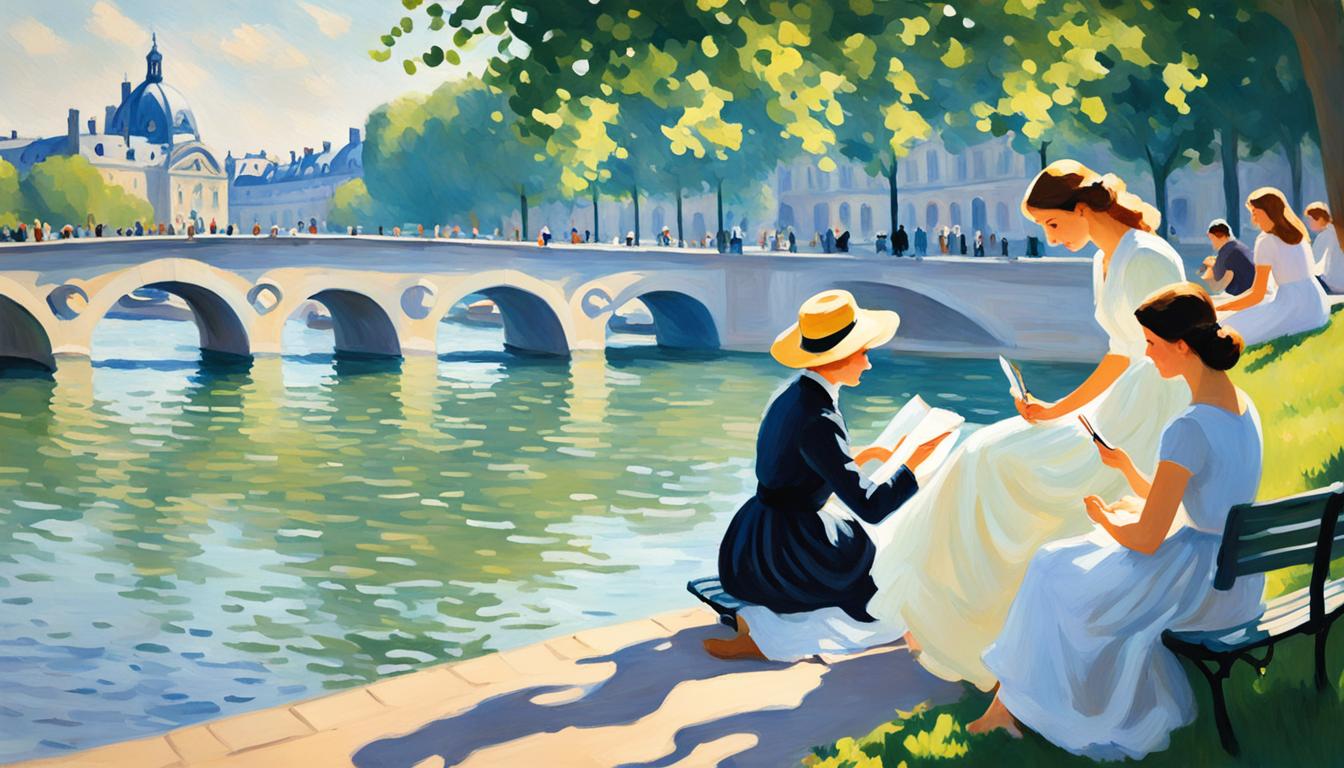Have you ever wondered why the Orsay Museum stands out among Paris’s iconic art institutions?
Located on the Left Bank of the Seine, the Orsay Museum is much more than just another destination on the list of Paris art museums. This awe-inspiring museum, housed within the former Gare d’Orsay railway station, is renowned for its vast collection of French Impressionism and Post-Impressionism masterpieces.
Stepping inside the Orsay Museum offers a deep dive into Paris culture and art history, where you can witness the magic of Monet, Degas, Renoir, Cézanne, and Van Gogh. From its captivating architecture to its meticulously curated collections, the museum is an essential journey for art enthusiasts and history buffs alike.
Planning a visit? Our guide will provide you with essential tips including the best times to visit, how to optimize your tour, and gaining a clear understanding of Impressionist art in modern-day Paris.
Get ready to explore one of Paris’s most iconic art institutions where each artifact tells its own intriguing story.
Quick Recommendation: Our blog is filled with tips, destinations, and travel deals. If you are looking for a budget-friendly travel and hotel deals, I recommend Expedia Travel Group.
Introduction to the Orsay Museum
The Orsay Museum stands as an essential cultural landmark in the heart of Paris, renowned for its impressive array of artworks dating from 1848 to 1914. The transformation from a railway station to an art museum adds a fascinating historical narrative to the visitor experience. This historical art landmark offers a unique glimpse into the evolution of various art movements, with a particular emphasis on Impressionism.
As a prominent part of the Paris art scene, the Orsay Museum is held in high esteem, rivaling other notable institutions such as the Louvre and Centre Pompidou. The museum’s carefully curated collections provide valuable insights into the progression of modern art, contextualizing its historical development profoundly. The Orsay Museum collections paint a vivid picture of the artistic landscape during the time, making it a must-visit destination for anyone interested in the rich artistic heritage of Paris.
Why the Orsay Museum is a Must-Visit for Impressionist Art Lovers in Paris

The Orsay Museum is renowned as an iconic Parisian museum, housing one of the largest collections of Impressionist art in the world. This exceptional institution serves as a dream destination for any art enthusiast.
Visitors can admire the masterpieces of Impressionism by legendary artists such as Manet, Renoir, and Pissarro. The museum offers an immersive experience, taking visitors back to the era that gave birth to this groundbreaking art movement.
Formerly a railway station, its stunning architecture and central location add to the allure, making it an essential stop on any art tourist destination itinerary. As an art critic once mentioned in a much-praised review, the Orsay Museum provides an unparalleled view of the evolution and impact of Impressionist art. Whether you are an avid admirer of Impressionism or a casual observer, this museum promises to captivate your senses.
Personal accounts from travel blogs rave about the Orsay Museum’s ability to bring artwork to life, creating a seamless blend of the past and the present. It stands as a vibrant testament to Paris’s rich cultural heritage, further solidifying its reputation as one of the most treasured art venues globally.

Top Impressionist Artists at the Orsay Museum
The Orsay Museum stands as a tribute to Famous Impressionist painters such as Claude Monet, Paul Cézanne, and Paul Gauguin. These artists are some of the Orsay Museum highlights, offering visitors an exceptional journey through their life works and evolving styles.
The museum’s collection allows art lovers to engage with original paintings that influenced entire generations. Each artist’s work provides an intimate perspective on Parisian culture, making Paris art tours through the Orsay both enriching and educational.
Indeed, the top Impressionist artists showcased at the Orsay Museum serve as a focal point for understanding the broader narrative of the movement. Visitors can appreciate the relics of art history, meticulously preserved and presented within this esteemed Paris institution.
VISIT THE ORSAY MUSEUM FOR IMPRESSIONIST ART
Nestled within the heart of Paris, the Orsay Museum offers a unique opportunity to dive deep into the world of Impressionist art. Its design and thoughtful organization encourage visitors to explore and engage with Impressionism intimately. From colorfully detailed guided Paris museum tours to informative placards, every element of the Orsay Museum experiences aims to enrich your understanding and appreciation of this influential art movement.
The museum provides engaging with Impressionism through interactive exhibits that allow visitors to connect personally with the artworks. These interactive features make it easy to see how Impressionism revolutionized visual art, offering an educational journey through time. Visiting the Orsay Museum is more than just viewing art; it’s about experiencing the transformation in art history that Impressionism brought forth.

The museum is a living testament to the enduring appeal of Impressionistic works. Through the eyes of masters like Monet and Degas, you’ll witness the birth of modern art. The Orsay Museum experiences ensure that every visitor leaves with a newfound appreciation for the way Impressionism has shaped the art world. With carefully curated Paris museum tours and a wealth of educational resources, a visit to the Orsay Museum is an inspirational and enlightening adventure.
Quick Recommendation: Our blog is filled with tips, destinations, and travel deals. If you are looking for a budget-friendly travel and hotel deals, I recommend Expedia Travel Group.
Must-See Impressionist Artworks
If you’re on a mission to see the Orsay Museum famous paintings, there are certain essential Impressionist pieces you cannot miss. Monet’s “Blue Water Lilies” is a stunning example of his ability to capture the ephemeral beauty of nature. The rippling water and delicate flowers create a tranquil scene that showcases his mastery in depicting light and color.
Equally captivating is Van Gogh’s “Starry Night Over the Rhône.” This emotionally charged work pulls you into the artist’s unique vision of the night sky, making it a cornerstone of art appreciation. Van Gogh’s self-portraits, found in the same gallery, provide profound insight into his turbulent life and mental state.
Don’t forget to admire Degas’s “The Ballet Class.” This piece captures the essence of Parisian life through its meticulous depiction of movement and light. The elegance and grace of the dancers make it an unforgettable part of the Orsay Museum famous paintings collection.
Another must-see is Manet’s “Olympia,” a painting that sparked scandal upon its debut due to its provocative subject matter. This work not only shocked the art world but also paved the way for modern art movements.
These essential Impressionist pieces offer a fascinating narrative through which one can trace the evolution of modern art. From Monet’s serene landscapes to Manet’s daring compositions, every piece adds richness to your art appreciation journey at the Orsay Museum.
Tips for Navigating the Orsay Museum
When it comes to making the most of your visit, implementing a few key Orsay Museum visitor tips can drastically enhance your experience. One of the top recommendations is to purchase tickets in advance to avoid long lines. Aim to visit early in the morning or later in the afternoon to dodge peak hours.

Grabbing a layout map and renting an audio guide can be a game-changer. These tools are invaluable for navigating Paris museums, making it easy to pinpoint must-see artworks and avoid getting lost in the extensive galleries.
Understanding museum etiquette is crucial, too. While photography is allowed, make sure to turn off the flash. Respecting the artworks and other visitors will ensure everyone’s enjoyment. Amenities such as restrooms, cafes, and seating areas make longer visits more comfortable, so knowing their locations ahead of time is beneficial.
When it comes to art viewing strategies, prioritize key artworks on your list. Utilizing the museum resources like guided tours and informational brochures will provide deeper insights into the collections. For differently-abled visitors, the museum’s accessibility information ensures an inclusive environment, providing amenities like wheelchair access and elevators.
Consulting seasoned traveler blogs can also yield insider tips, further refining your approach to navigating Paris museums. These bits of advice often cover less crowded areas, hidden gems, and personalized art viewing strategies for a more rewarding visit.
Quick Recommendation: Our blog is filled with tips, destinations, and travel deals. If you are looking for a budget-friendly travel and hotel deals, I recommend Expedia Travel Group.
Beyond Impressionism: Other Art Movements in the Orsay Museum
While the Orsay Museum is renowned for its Impressionist art collections, it also houses an impressive range of other art movements. The museum showcases Art Nouveau, Realism, and Symbolism, providing insight into the diverse art collections that span the 19th and early 20th centuries.
Visitors will find an array of cultural artifacts, including decorative arts, photographs, and sculptures that reflect the period’s social and cultural dynamics. This diverse collection offers an in-depth perspective on the various Orsay Museum art movements, presenting a broader view of artistic expression during this era.
The interplay between different movements within the museum’s collection allows for a comprehensive understanding of the dynamism present in this pivotal time for art history. Exhibitions frequently feature works that highlight the interconnectedness and thematic evolution from Impressionism to later movements, challenging visitors to appreciate the continuum of art history.
Significant works from beyond Impressionism, such as pieces by renowned Realist and Symbolist artists, illustrate the complexity and interwoven threads of artistic evolution. The Orsay Museum’s art movements offer a rich and educational experience, making it an essential destination for art lovers seeking to explore the full spectrum of 19th and early 20th-century cultural artifacts.
Orsay Museum vs. Louvre: Which Should You Visit?
Comparing Paris museums often brings up the discussion of the Orsay Museum versus the Louvre. Each has its own unique charm and appeal, making art tourism choices in Paris quite varied.
The Louvre Museum highlights include an expansive collection of historical artifacts and masterpieces from various eras, including iconic works such as the Mona Lisa and the Venus de Milo. Art enthusiasts looking for a broad spectrum of artworks and historical pieces will find the Louvre extremely fulfilling.
On the other hand, the Orsay Museum offers a more focused experience, primarily showcasing 19th-century art with an emphasis on Impressionism. This makes it a treasure trove for those specifically interested in the evolution of Impressionist art. Renowned works by Monet, Van Gogh, and Degas create an intimate yet enthralling visit.
Family-friendly art tourism choices might lean towards the Louvre due to its grandeur and diverse offerings, providing something for every taste. Comparatively, the Orsay’s dedication to Impressionism and other 19th-century art movements can deliver a more specialized cultural experience, perfect for art connoisseurs.
The proximity of both museums allows visitors to enjoy a combined trip, immersing themselves in different historical periods and artistic styles. Reviews often highlight the distinct ambiance of each museum, catering to various visitor preferences and interests.
Ultimately, whether to visit the Orsay Museum or the Louvre depends on personal interests and the kind of artistic journey one seeks. By understanding what each museum offers, visitors can better plan and prioritize their Paris art adventure.
Planning Your Visit: Tickets and Hours
To make the most of your time at the Orsay Museum, being aware of the ticket options and the opening hours is essential. The museum offers a variety of admission tickets including standard, reduced, and group rates. Standard Orsay Museum admission for adults typically costs around 16 euros, while visitors under 18 and EU residents under 26 years of age can enter for free, providing a great saving for younger art enthusiasts.
The Orsay Museum is open from 9:30 AM to 6:00 PM from Tuesday to Sunday, with late hours extending to 9:45 PM on Thursdays. It remains closed on Mondays and May 1st, so plan your visit accordingly. To avoid the heaviest crowds, consider visiting early in the day or during the evening hours on Thursday. Additionally, the first Sunday of every month offers free Orsay Museum admissions, making it an ideal day for budget-conscious travelers.
Visitors can purchase tickets in advance online through the Orsay Museum’s official website or at the museum entrance, though buying them ahead of time is recommended to skip the lines. If you’re visiting Paris cultural sites and have limited time, a skip-the-line ticket will enhance your experience by minimizing waiting time. Keep an eye on the museum’s website for any updates on holiday closures or changes in hours due to special events. This ensures you won’t miss out on exploring the extensive collection of Impressionist masterpieces housed within this iconic cultural venue.
Quick Recommendation: Our blog is filled with tips, destinations, and travel deals. If you are looking for a budget-friendly travel and hotel deals, I recommend Expedia Travel Group.
